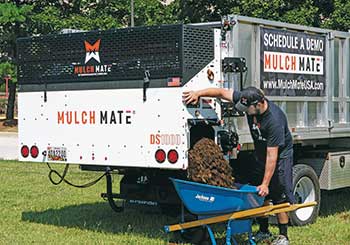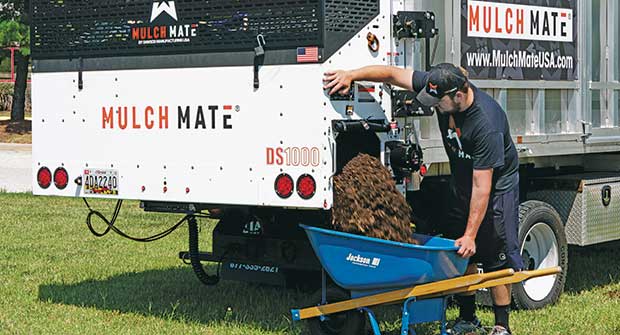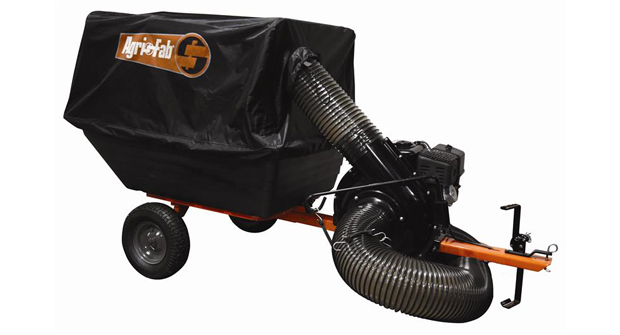
Spring cleanup jobs can include removing debris from the previous season, preparing the property for the upcoming season and mulching as an added service. One thing is for certain: Landscape professionals say using the right equipment can help accomplish these tasks.
“Since we started, we have been able to use our equipment and skills much more efficiently and effectively,” says Robert Brandsetter, owner of Rob’s Lawn Stars. “We used to do the majority of cleanups by hand, but now we incorporate the zero-turn and bagging system much more. They make leaf cleanups much easier.”
Brandsetter says in his five years in operation, he’s realized the importance of the quality of equipment he and his team use on spring cleanup jobs. Rob’s Lawn Stars is a lawn care and landscape maintenance company in Bethlehem, Pa. Brandsetter’s clientele is about 85 percent residential.
“When we started, we were buying cheap blowers and trimmers,” he says. “We now know we cannot nearly get the same kind of quality work (from them) as commercial blowers and trimmers. So many little things like that can add up and create major inefficiencies. One of the tasks that seems so obvious now is to not rake out the beds first before you trim the bushes. That’s double the cleanup.”
Organization hack
Keith Kurian, owner of Green Inspirations Landscaping in Whitemouth, Manitoba, stays organized for spring cleanups with good record keeping.
“We have a detailed list with the services required for each client, as well as a route making backtracking less likely,” Kurian says. “We service a few different towns as well as rural areas, so one of the things that throws a wrench in our efficiency is when we’ve completed an area and get a phone call for another spring cleanup for that area.”
Kurian uses social media to be as efficient as possible in the spring. His business provides 70 percent landscape installation and 30 percent landscape maintenance services to a 85 percent residential and 15 percent commercial clientele.
“We post on the local town Facebook pages that we will be in that area doing cleanups one to two days before we go and ask them to contact us for a quote,” he says. “We also email every client that we have serviced in the past few weeks before the cleanups start and remind them that the time is nearing and to book their service as soon as possible.”
Kurian says it’s also important to ask any new spring cleanup clients whether a fall cleanup was done on the property. The answer will dictate what type of equipment and the number of crew members needed for the job. It’s also critical to have a game plan ahead of time before heading to a task.
“Have your crew assigned to each piece of equipment or duty for each job or day ahead of time, so there is no wasted time deciding who’s pushing the power rake, who’s on a zero-turn, etc.,” he says. “This year, we will likely carry an extra belt for our power rake as it seems to let go every couple of years and set things back a bit.”
Pump up production
Nick Carlson has spent more than 16 years as a landscaping professional. One purchase changed how much time was spent on spring cleanup jobs — a Turf Teq power edger. He says this knocked off four to six weeks from all cleanup jobs, thanks, in part, to the edger.
“Automating my business was helped by adding a really good piece of equipment,” he says.
That inspired him to look at other areas of inefficiency within his business. Carlson created Mulch Mate, an electric mulch delivery system and now serves as the company’s CEO and founder. He’s also introduced Kart Mate, an articulating cart that attaches to a commercial mower, and Truck Mate, a truck-sized version of Mulch Mate. These were born out of the need to automate parts of his business, hence the word “Mate” in his product line.
“With Mulch Mate, you’re able to get your (mulching) jobs done between four and six weeks sooner,” he says. He adds spring is a good time to take a look at current practices that are inefficient in a business. One example is being strategic in where mulch trailers are parked because they often can’t get close to the worksite.
“You’re extending your wheelbarrow runs, which means the guys will be walking farther distances,” Carlson says. “We need to focus on getting the guys shorter routes. What if you could do a job, have it done with the same amount of people, but instead of walking 30,000 steps, you’re only walking 10,000 steps? If you can introduce some automation and some efficiencies, everybody’s going to win.”
Jeff Simerly, engineering manager of New Peco, also designs from experience. He uses Peco’s mower-mounted and trailer lawn vac equipment as he does landscaping work part time. Simerly says Peco’s wand kit that attaches to one of the company’s vacuum systems can help cleanup crews become more efficient. The system also compacts leaves with a 6-1 reduction ratio compared to those traditionally raked.
“You can go into flower beds and clean up all the leaves and things,” he says. “It makes it a lot faster and a lot better than having to use a rake. You’re just pulling all that material up.”


